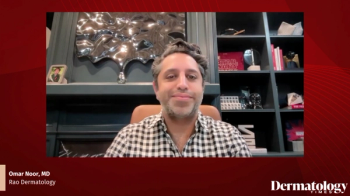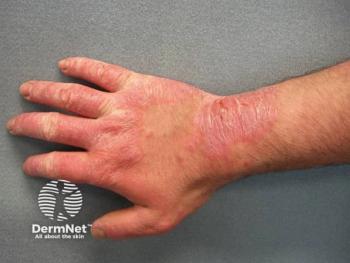
Uniting Experts and Advocates to Advance HS Care
Key Takeaways
- Hidradenitis suppurativa is an underdiagnosed inflammatory skin condition marked by painful nodules and abscesses.
- Bridging clinical expertise and patient advocacy is essential for improving HS diagnosis and treatment.
A recent HS Summit hosted by UCB brought together clinicians and patient advocates to strengthen research and awareness efforts.
Hidradenitis suppurativa (HS) remains a complex and often underdiagnosed inflammatory skin condition, marked by recurrent, painful nodules and abscesses. In a recent discussion with Dermatology Times, Steven Daveluy, MD, board-certified dermatologist at Wayne State University in Detroit, Michigan, and board member of the HS Foundation, joined patient advocate Chaquira Andrade to highlight the importance of bridging the gap between clinical expertise and patient advocacy.
“One of the things I think is super valuable about meetings like the
The summit provided a forum for scientific experts and patient advocates to come together—2 groups that often work in parallel rather than in unison. “When we collaborate and work together, it’s really powerful,” Daveluy noted. “It makes the science stronger, and it makes the advocacy efforts more informed by the latest research.”
For Chaquira, a patient living with HS, the journey to diagnosis and effective treatment was long and challenging. She described years of misdiagnoses, limited access to knowledgeable providers, and repeated visits to emergency departments for pain relief and wound care. “You’re constantly having to advocate for yourself,” she explained. “It’s exhausting, and sometimes you feel like you’re not being heard.”
Daveluy emphasized the importance of clinicians truly listening to patients’ lived experiences, not only to improve care but also to identify areas where research can have the greatest impact. “The patient perspective helps us understand what really matters—what treatments are tolerable, what’s improving quality of life, and where we’re falling short.”
For both clinicians and advocates, education remains central to progress. Initiatives that improve awareness among primary care physicians, dermatologists, and the general public may help reduce the delay between symptom onset and diagnosis, which currently averages several years.
“When experts and advocates unite,” Daveluy said, “we can break down the silos and move forward faster for people with HS.”
The conversation underscored a shared vision: combining scientific advances with patient-led insights to improve diagnosis, expand treatment options, and ultimately enhance quality of life for those living with HS.
Newsletter
Like what you’re reading? Subscribe to Dermatology Times for weekly updates on therapies, innovations, and real-world practice tips.



















